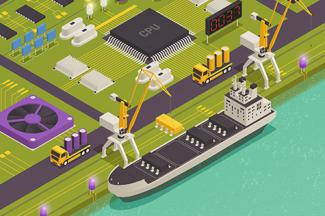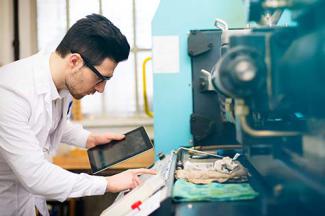
5 Essential PCB Design Best Practices for Cost Savings
TTM is a global leader in the design and manufacture of printed circuit boards (PCBs) and our team members are skilled and experienced to meet the needs of our customers. TTM is a one-stop solution provider covering all stages of a product’s life cycle, from prototype to high volume product, all at unyielding standards of quality and reliability.
To assist you with your next PCB design, we would like to share with you a recent report, the “5 Essential PCB Design Best Practices for Cost Savings” which was written by two of our amazing engineers, Julie Ellis and Glenn Ames, who are key players devoted to our customer’s success.
Best Practice #1: Consider the Whole
Design for excellence; that’s the goal. We engage your entire team early on, from procurement to PCB designers to supplier quality engineers, with our FAEs and site engineering teams. PCB-related design inputs can be beyond the board. They are not necessarily just about the PCB itself. One also needs to take into consideration the end use application and reliability requirements of the product. While this approach may seem time-consuming, it will ultimately lead to a robust design, and most importantly, a long-term cost effective solution. Before you begin, you should ask yourself the following questions:
- How is the PCB going to move through a pick-and-place machine in the assembly line? Will this require rails?
- How will assembly considerations put panel utilization at risk?
- Are there any overhanging parts? How will these be handled during assembly?
- Will reliability be possibly compromised during PCBA process or end use application?
- Can this PCB be read by a vision system?
- Are there thermal management considerations?
Best Practice #2: Keep it Simple
Once you have determined the most complex aspect of your design, simplify wherever else possible. When you can keep your PCB design optimized to your specific application, it not only promises better yields but it will save money, time, and possible needs for re-design. “A designer knows they have achieved perfection not when there is nothing left to add, but when there is nothing left to take away.”
Best Practice #3: Know Where You’re Going
After you determine the main design attributes, you should then determine the right fabrication site with QTA/Prototypes/NPI/volume manufacturing in mind and align with the respective plant’s technical capabilities. For example, requirements for high layer count, heavy copper, radio frequencies (RF/mmWave), and high-density interconnect (HDI) need to be carefully considered. These four different technologies may need to go to four different sites because of the equipment and expertise required to fabricate and test these PCBs. If you have plans to transfer from prototype to volume from a high cost to a low cost region, remember to use common tools, materials, and process definitions that can be shared between your prototype and volume fabricator to create a seamless process transfer for your project.
Best Practice #4: Room to Move
Allow for material movement within your PCB design to accommodate for manufacturing tolerances. One of the most common design issues PCB fabricators are challenged by is tight registration due to insufficient plated through via pad sizes to meet annular ring requirements and drill to metal/feature spacing. Avoiding this trap is crucial for successful PCB fabrication. Engage with your PCB fabricator’s FAEs and work with their design rules to be aligned with your manufacturing specification and end product requirements.
Best Practice #5: Make the Most of It
PCB fabricators manufacture panels, not individual boards. Therefore, consider panel utilization as part of your PCB design in the very early phases of your design process since product attributes often dictate form factor and circuit size. A standard panel is 18”x24”, however, there are other panel size options available. Collaborate with your PCB fabricator and the assembler to plan single PCBs with/without rails, or multiple-up PCBs on an array with rails to ensure you can fit as many assembly-ready PCBs or arrays on a production panel as possible. Ultimately, you are paying for the entire panel so design your products to maximize panel utilization. Additionally, if your design allows, consider nesting your PCBs for even greater optimization.
Cost Savings, by Design
With a global field application network backed up by 24 global manufacturing and assembly sites, TTM is uniquely positioned to support you from product conceptualization to prototyping, new product introduction (NPI) and production. Through effective early engagement and collaboration, TTM is able to work with you to develop cost effective, high performance designs, and to help you select the right factory or combination of factories to seamlessly support your product manufacturing needs no matter the product or end-use application. TTM is here to support your specific requirements through our broad product offering of advanced technology PCBs, backplane assemblies, custom assembly solutions, and RF components. TTM provides advanced technology and high reliability PCB solutions for Automotive safety products (Sensors, mmWave Radars, Cameras, and Lidars), electric vehicles, AI in autonomous vehicles, 5G applications, advanced networking line cards, high speed computing, and Aerospace & Defense electronics. Additionally, TTM provides substrate like PCBs (SLP), high performance RF components, and advanced ceramic components. Request a customized technical consultation with one of our experienced Field Applications Engineers for your next prototype build at TTM.











